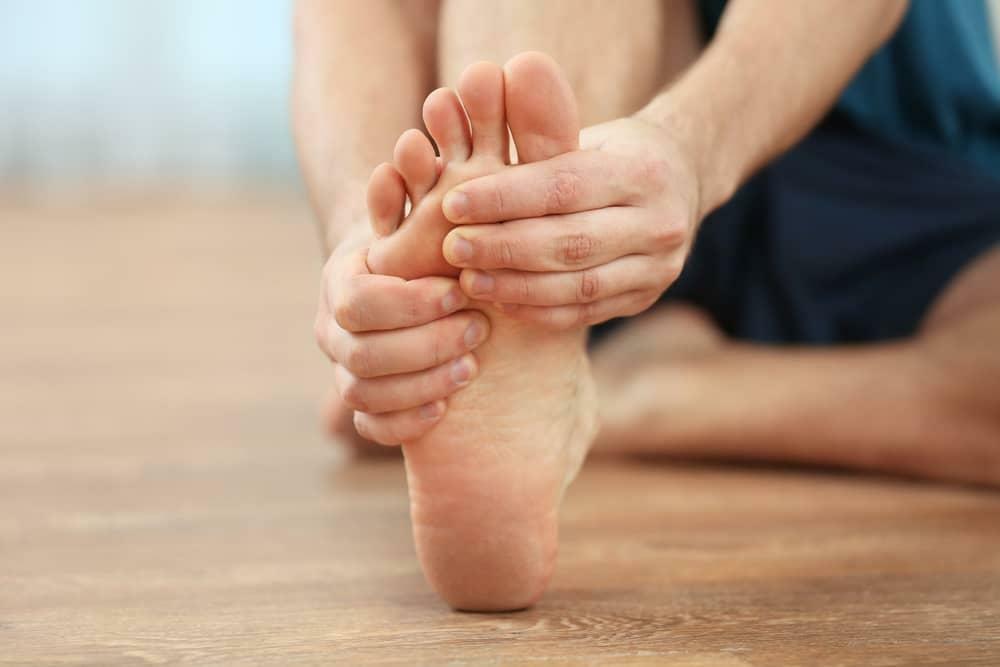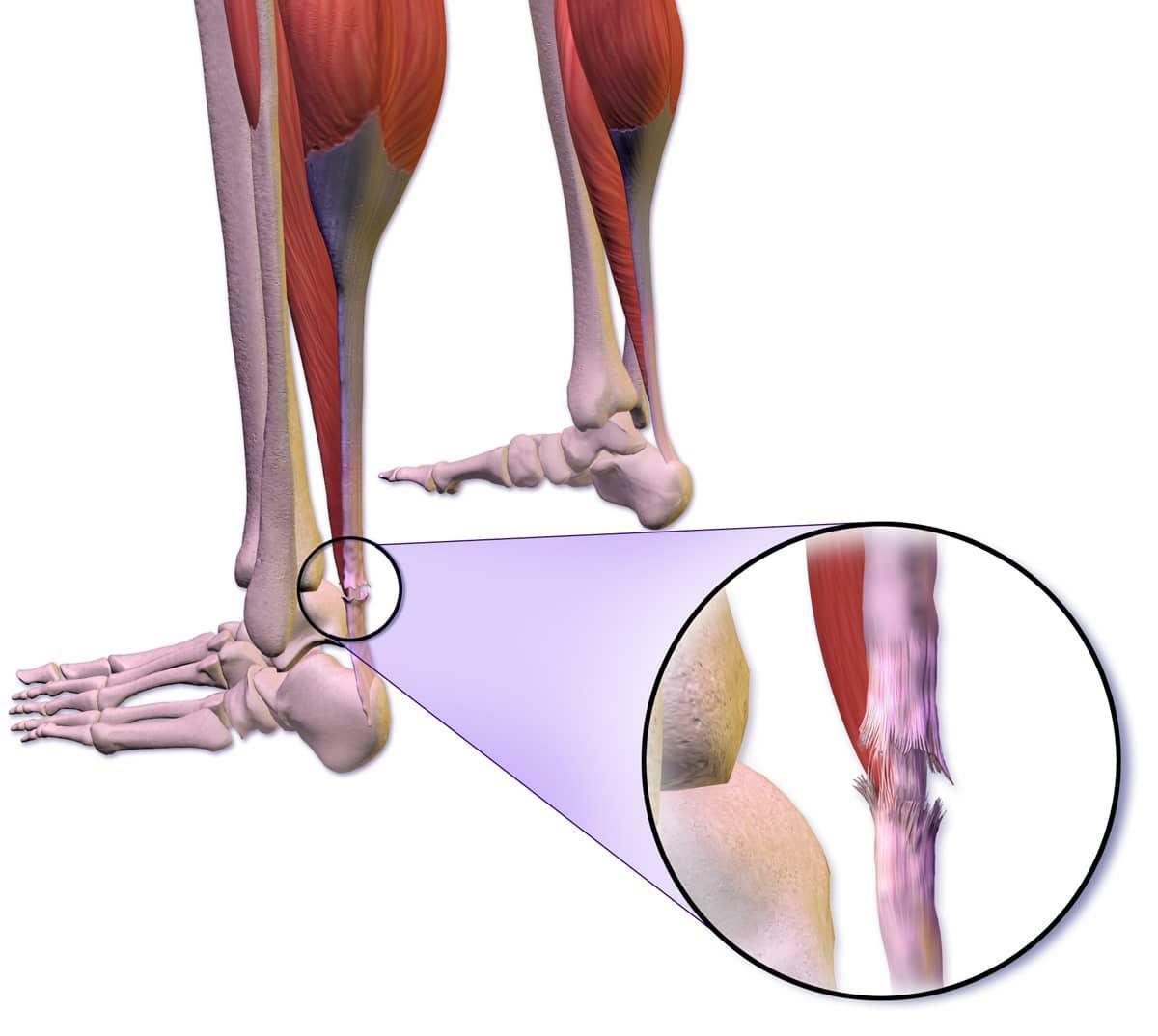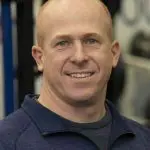
Achilles tendinopathy (Achilles Tendonitis) injuries are commonly treated here at your Knoxville chiropractors' office in the sporting realm but occur just as frequently outside of it. We have probably seen just as many cooks, merchandisers, waiters with foot pain as we have runners, jumpers and other athletes. The type of injury that our chiropractors will be addressing in this article will be the Achilles tendinopathy, formerly known as Achilles tendonitis. Tendinopathy is a more general but complete term as it takes into account the small tears that may develop in conjunction with the inflammation.
 Anatomy of the Achilles Tendon
Anatomy of the Achilles TendonThe Achilles tendon is the thick ropey tendon that is located at the back of the heel. The large strong muscles of the calf, the gastrocnemius, and soleus, are the 2 muscles that form the Achilles tendon. This group makes it possible to raise up on your toes, and push off when walking and running. When the musculotendinous junction (an area that the gastrocnemius/soleus muscle fibers begin to turn into the connective tissue fibers of the tendon) and/or the bony attachment of the tendon to the heel becomes irritated and inflamed a condition known as Achilles tendonitis develops.
A number of things contribute to the development of this condition. It is an overuse injury that, in athletes, is commonly seen in jumpers, sprinters, and those that are repeatedly maximally loading the tendon. However, one of the most important things to consider with this condition is the mechanics of the foot. Overpronation, high arches, collapsed arches, and rigid feet are all aspects that can directly affect this condition. We bring this up to explain why far more than athletes are affected by this condition.
The non-athlete that is on their feet all day with improper foot mechanics is putting undue strain on various aspects of the foot for hours and hours every day. Over time this will cause dysfunction of the tendon which leads to foot pain. This person is just as likely, if not more likely, to develop Achilles tendinopathy as a runner or other alleged athlete.
Yep… Sounds like me. Now what?
As was explained earlier, ensuring that the structures in the foot are functioning and moving like they should is immensely important when addressing this condition. With a foot that has a collapsed medial longitudinal arch (seen with overpronation), it is common to see bowing of the Achilles tendon medially. As you can imagine, when the tendon bows it puts different stress on both the tendon itself and also the area of attachment that it is aberrantly pulling. Addressing these biomechanical changes through chiropractic manipulation of the bones of the feet will be incredibly important.
A Sports chiropractor trained in the specific manipulation of the extremities, especially the feet will know what areas need to be mobilized, and what areas need to be reciprocally strengthened to avoid further damage to the area. In some instances, after foot mobility has been addressed, orthotics may be utilized to make up for any further compensations in the feet. This is when we can start addressing issues regarding foot pain
This will require you to get down and dirty with the nasty bits of the muscle and tendon that are restricted and causing your foot pain. A health care provider with an understanding of functional movement analysis and assessment will be able to spot the areas of restriction, likely in the gastrocnemius, hamstrings, or hip flexors.
Also, the tissue in the plantar aspect of the foot is commonly involved as that thick band of fascia continues up into the Achilles tendon and calves. Once the area has been assessed and deemed the culprit, extensive trigger point work and soft tissue manipulation should be employed. Much of this you can do yourself with the right tools.
A foam roller can often be employed for the calves, slowly rolling until you find that exquisitely tender spot and then camp out on it for about 45 seconds. While here, you can gently play with plantar and dorsiflexing the foot to allow the muscle to gently slide underneath the pressure and ensure that you are fully addressing the entire area.
Lacrosse balls and golf balls make excellent tools for accessing those tough points on the bottoms of the feet. Even if you don’t have plantar fasciitis type symptoms in addition to the Achilles pain, it will be just as important to get in there as the fascia connects to the Achilles. Roll your foot over the ball with adequate pressure stopping when you’ve reached a tender spot. The idea is the same here pausing on the sore spots for 45 seconds or so but this time flex your toes and then pull them up with your hand. This slightly moves the fascia underneath the point of pressure allowing you to get deeper into the area.
Gentle stretching of the calves and Achilles can help to pump some of the swelling and inflammation out. The key here is Gentle. Too much will have the exact opposite effect. Seeing as the mechanism of the injury is too much pulling of the tendon on the bone or muscle belly, it can be very easy to irritate those healing tissues. However stretching little bits will help to combat the over adhesive nature that scar tissue tends to have. Mild pulling at the area where it is being laid down will help it meld with the flexible tissue around it instead of getting bunched up and causing a weak point in the tendon.
Gentle Movements of the ankle will also be helpful here such as writing the alphabet with your foot. This should be done about a week after the initial incident. Too much movement too soon can slow down the healing process (same goes with stretching) but as the area begins to heal, movement of the area is imperative not only to ensure proper healing of the tendon but also to restore some the neuromuscular connection that has been altered due to the injury.
These are all solid pieces of advice for maximizing the healing time for an Achilles tendon injury, but remember, seeing a Chiropractor that understands these sorts of conditions should always be your starting point. If you are currently experiencing foot pain, you may be experiencing Achilles Tendinopathy. Try these out and let us know what you think. If your foot pain continues, please give us a call so we can use non-surgical and drug free methods to alleviate your discomfort.

8029 Ray Mears Blvd, Suite 300
Knoxville, TN
37919
Phone: 865-337-5574
Monday
7am-12pm & 1pm-6pm
Tuesday
7am-12pm & 1pm-4pm
Wednesday
7am-1pm
Thursday
7am-12pm & 1pm-6pm
Friday
7am-12pm & 1pm-4pm
Saturday & Sunday
Closed